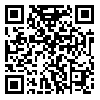Volume 6, Issue 2 (May 2021)
JNFS 2021, 6(2): 185-192 |
Back to browse issues page
Grant MacEwan University, Edmonton, Alberta, Canada
Abstract: (1587 Views)
Background: Food security has been a target in India since its independence; the primary aim of food security is to ensure enough staple food for the entire population. Although substantial progress was made through the adoption of green revolution (GR) technologies and implementation of the food public distribution system (PDS), desirable food and nutrition security, as defined by the food and agriculture organization (FAO), is far from being realized. This paper scrutinized the potential contribution of millets in achieving food and nutrition security in India. Methods: The present study was conducted based on the secondary data obtained from FAO Corporate Statistical Database and published literature on food and nutrition security. The impact of the GR technologies and the PDS on food and nutrition security was examined using 58 years of acreage, production, and yield of rice, wheat, and millet, as well as comprehensive information on relevant issues including climate. Results: Both GR technologies and PDS unduly favored two principal crops, namely rice and wheat, marginalizing all other crops cultivated for thousands of years to meet the food and nutrition requirement of mostly developing countries including India. Millets constitute one such neglected group of crops in India, which have tremendous potential for contributing to food and nutrition security. Conclusions: Millets are to be included in the PDS alongside rice and wheat so that they receive an appropriate Minimum Price Support. Appropriate implementation of relevant regulations, continued research and development, and adequate support for cultivation and marketing of millets are necessary in this regard.
Type of article: orginal article |
Subject:
public specific
Received: 2020/07/13 | Published: 2021/05/11 | ePublished: 2021/05/11
Received: 2020/07/13 | Published: 2021/05/11 | ePublished: 2021/05/11
| Rights and permissions | |
 |
This work is licensed under a Creative Commons Attribution-NonCommercial 4.0 International License. |





